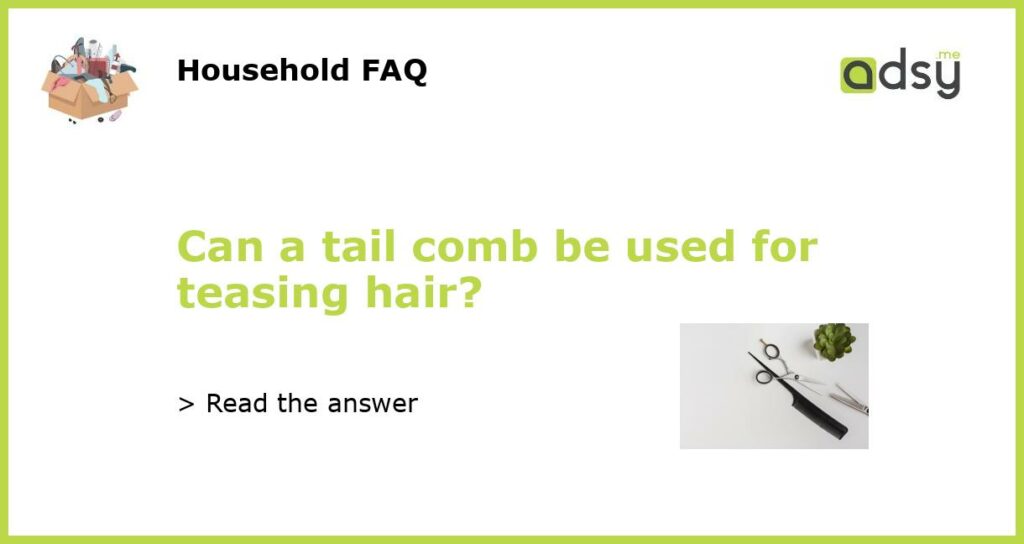Yes, a tail comb can be used for teasing hair
Teasing hair is a popular technique used to add volume and texture to hairstyles. While there are many tools that can be used for teasing, one of the most common and effective tools is a tail comb. With its fine, pointed teeth and long handle, a tail comb allows for precise teasing and can help create the desired look. However, it’s important to note that proper technique and caution should be used when teasing hair to avoid damage.
What is teasing?
Teasing, also known as backcombing or ratting, is a technique used to add lift and volume to the hair. It involves sectioning off small sections of hair and combing them in the opposite direction of the hair growth. This creates friction and causes the hair to tangle and lift away from the scalp, resulting in added volume. Teasing can be done at the crown of the head for added height or throughout the hair for all-over volume.
How to use a tail comb for teasing
Using a tail comb for teasing is relatively simple, but it’s important to approach it with caution to avoid causing damage to the hair. Here’s how to use a tail comb for teasing:
- Start by sectioning off the hair you want to tease. This could be at the crown of the head or throughout the hair, depending on the desired style.
- Take a small section of hair from the chosen area and hold it taut. This will make teasing easier and more precise.
- Using the tail comb, comb the section of hair in the opposite direction of the hair growth. Start at the roots and work your way towards the ends, creating tension and causing the hair to tangle and lift.
- Repeat this process with small sections of hair until the desired level of volume is achieved.
- Once you’re finished teasing, gently smooth the top layer of hair over the teased sections to create a polished look. Use a brush or your fingers to do this.
Tips for teasing hair with a tail comb
When using a tail comb for teasing, keep the following tips in mind:
- Start with clean, dry hair that is free of product. Teasing tends to work best on hair that has some texture, so freshly washed hair may not hold the tease as well.
- Be gentle when teasing the hair to avoid causing damage or breakage. Comb through the hair slowly and avoid pulling or tugging.
- Use a light touch when applying hairspray or other products to set the tease. Too much product can weigh the hair down or make it look clumpy.
- To remove the tease, gently comb through the hair from ends to roots using a wide-toothed comb. Avoid pulling or tugging to prevent damage.
- Experiment with different sections of hair and teasing techniques to achieve different looks. Practice and patience are key to mastering the art of teasing.
Other tools for teasing hair
While a tail comb is a popular tool for teasing, there are other tools that can be used as well. Some options include:
- Teasing brush: This brush is specifically designed for teasing and often has boar bristles or a combination of boar and nylon bristles. The bristles are usually stiffer than those on a regular brush, allowing for more effective teasing.
- Teasing comb: Similar to a tail comb, a teasing comb has a long handle and fine teeth. However, the teeth on a teasing comb are shorter and closer together, making it easier to control the tease.
- Teasing pick: A teasing pick is a comb with a long, pointed handle and wide teeth. This tool is ideal for creating large, voluminous teases or for teasing thick or curly hair.
In conclusion, a tail comb can be used effectively for teasing hair. With its fine teeth and long handle, it allows for precise teasing and can help create volume and texture. It’s important to approach teasing with caution and use proper technique to avoid damage to the hair. Additionally, there are other tools available for teasing, such as teasing brushes and combs. Experimenting with different tools and techniques can help you achieve the desired look.






